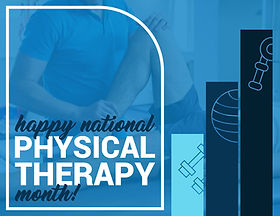Doc Talk: ACL Injuries Q&A with Dr. Goodwin
- Arthritis & Sports
- May 28, 2019
- 3 min read
Updated: May 26, 2021

As the largest joint in the body, the knee is essential for performing countless daily activities, with many components that must work in harmony. Recently, Dr. David Goodwin sat down with an area high school newspaper to talk about a rather common knee injury in high school athletes - ACL tears.
Q: What is the function of the ACL?
A: The ACL, short for anterior cruciate ligament, is one of the 4 primary knee stabilizers (as well as the posterior cruciate ligament, medial collateral ligament, and posterolateral corner/lateral collateral ligament). It protects the knee from excessive force and is a primary restraint for anteroposterior (front to back) and rotational motion.
Q: Why are ACL injuries so common among teenage athletes?
A: ACL injuries are epidemic among teenage athletes, particularly female soccer players. The primary reason for this is related to the anatomy of a teenage athlete. As the growth plates close (around 14 years old in females, 16 years old in males) the ligaments, such as the ACL, become the weakest link in the athlete’s anatomy. It is also thought that biomechanical weaknesses, such as deficits in leg, hip, and trunk strength may cause an athlete’s knee to experience significantly more force than in older athletes with more muscle mass and muscle control. It is for this reason that ACL prevention programs exist and work to target muscle imbalances and weaknesses that my predispose athletes to ACL tears.
Q: In what sports are athletes most likely to tear their ACL?
A: Females are 4-6 times more likely than males to experience ACL injuries - a lot of this is due to difference among males and females in hormones, anatomy, and knee biomechanics. The most common sports for ACL tears are soccer and football.
Q: What can athletes do to prevent ACL injuries?
A: There are a number of ACL screening tests that can evaluate an athlete’s risk for ACL rupture - tests that are as simple as jumping from an 18-inch tall box. These screening tests are then used to select athletes at elevated risk for ACL tears and enroll them in ACL prevention programs which retrain the body through stretching, strengthening, and endurance to lower ACL rupture rates. These ACL prevention programs have been extremely effective, and in some cases, have led to 90% declines in ACL rupture rates. Athletes of all levels and ability may have elevated risks of ACL tears based off the available screening tests- it by no means suggests an athlete is not as good or strong as other athletes. The ACL prevention tests and programs target specific muscle groups that may predispose athletes to ACL tear.
Q: What are the long-term effects of ACL injuries?
A: ACL injuries can be potentially devastating injuries. Even after ACL reconstruction (which is recommended in the majority of athletes), patients with ACL tears have a significantly higher rate of developing knee osteoarthritis. This is thought to be due to the significant force and destruction that occurs at the time of the ACL which may also damage cartilage, the meniscus, and typically creates a unique bone bruise pattern. Athletes with ACL tears also have a risk of not returning to sports. Although this occurs in less than 5% of patients, some athletes are unable to return to sports due to ongoing leg weakness, stability, or other issues with the knee.
Q: If an athlete tears their ACL, can they play competitively again?
A: In most cases, yes. Well over 90% of athletes return to sports (at their previous level whether it is recreational, collegiate, or professional) by 12 months after surgery.
David Goodwin, MD is a fellowship-trained sports medicine physician who specializes in the non-operative and surgical treatment of both youth and adult patients with shoulder, knee, hip, and sports injuries. He treats patients in our South Riding office. To schedule an evaluation, request an appointment online or call us at 703-272-5000. To stay up-to-date on the latest news and tips from us, be sure to follow us on Facebook and Instagram, and sign up for our monthly newsletter for even more information sent straight to your inbox!


























